Superhub rising
( China Daily Europe )
Beijing's new airport will be a transportation center as well as a development engine for the entire region
Beijing Daxing International Airport, now rising on former farmland south of the city, will be much more than an airport. When completed by October 2019, it will be a hub for air, high-speed rail, subway, highway - and even bicycle - traffic.
It is also expected to drive development throughout the Beijing-Tianjin-Hebei province region, also known as Jing-Jin-Ji.
In addition, the 150-square-kilometer planning zone around the airport is expected to become a center for research, industry, logistics and cultural activities, as well as a pleasant place to live.

|
The Daxing airport is still under construction. Photos by David Blair / China Daily |
|
The entrance to the departure gates. |
"The airport area is designed for people, for their living and working and convenience. ... Living areas will be designed around 'life circles' in which all the daily necessities of life can be found within a 15-minute walk from residences," Liu Dingding, vice-general manager of Beijing New Aerotropolis Holdings, told China Daily.
Beijing New Aerotropolis was set up by the government of the Daxing district of Beijing and Beijing Yizhuang Investment Holdings Corp to plan the long-term development of land adjacent to the airport. The airport will be partly located in Daxing, a southern district of Beijing, and partly in Hebei province. Yizhuang is a town in Daxing.
The new airport, which is 43 kilometers from Tian'anmen Square, sits exactly on the city's traditional north-south central axis, which was established by the Yuan Dynasty (1271-1368). It is in the middle of a triangle formed by the port city of Tianjin, roughly 100 kilometers southeast of Beijing; the new city of Xiongan, which is under construction in Hebei about 100 km southwest of Beijing; and the southern sections of Beijing.
Because of its location, the airport will be a key link in two national economic development strategies - the Xiongan New Area, an economic zone that will reduce Beijing's noncapital functions, and the economic integration of the Beijing-Tianjin-Hebei region.
Unlike the generally linear designs of the past, the Daxing airport will be shaped like a flower, with a central hub used for passenger processing, ticketing and security. Five petals of the flower will lead to the gates, and administrative offices will be located in a sixth petal.
The design of the airport, which will be the world's largest in terms of area, ensures that the farthest gate is just a 600-meter walk from the central hub.
By using distributed zones of operation, the airport is set up so that passengers will need to walk less than eight minutes to or from a gate, and luggage will arrive at the carousel in less than 13 minutes after a flight's arrival.
High-speed rail and Beijing subway stations, meanwhile, will be at underground levels of the airport, ensuring what is called "zero-distance" changes between transportation modes. And, for the first time at any airport, according to Max Hirsh, a research professor at Hong Kong University, there will be two levels of roads leading to the departure areas to reduce traffic congestion.
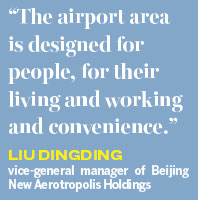
Cao Yunchun, director of the Institute of Aviation Economics at Civil Aviation University in Beijing, says plans for the Beijing-Tianjin-Hebei region and the Xiongan New Area, along with the Belt and Road Initiative, are driving a new round of technological transformation. He says air transportation is especially important to central and western parts of China, which are not close to the sea.
The State Council, China's Cabinet, created two airport economic zones - Daxing and one in Zhengzhou, Henan province. Ten more airport zones were created by the National Development and Reform Commission and the Civil Aviation Authority.
China is currently building eight new airports per year and will have a total of 260 by 2020, up from 175 in 2010, according to the 13th Five-Year Plan (2016-20).
Cao points out that the Zhengzhou zone has had a growth rate of 19.4 percent per year and thus has become a growth driver of Henan province.
In October, airport-area development experts and practitioners from many countries met in Beijing at the Sustainable Airport Areas International Seminar 2018, organized by Beijing New Aerotropolis and Hubstart Paris Region, an organization that promotes development of the regions around Paris' airports.
The idea of an "aerotropolis," meaning city development with an airport as its center, drives much current airport development.
"The aerotropolis will provide services to the Jing-Jin-Ji area - international culture exchange, international trade and international industrial cooperation," says Liu, the Beijing New Aerotropolis vice-general manager. "Jing-Jin-Ji people will have lots of opportunities to work in this area."
In addition, airports, especially in Asia, are becoming destinations unto themselves - with recreational facilities, conference centers and shopping either at the airport or nearby. In the movie Crazy Rich Asians, the main character walks through the new Terminal 4 at Changi Airport in Singapore and says: "I can't believe this airport has a butterfly garden and a movie theater. All we have at JFK (New York City's leading airport) is salmonella and despair."
Beijing Daxing International Airport, meanwhile, is being designed as an efficient transfer hub for international travelers going on to other cities in China or elsewhere, according to Kong Yue, vice-general manager of the airport.
At Beijing Capital International Airport to the north, he says, less than 10 percent of the passengers are transfers. Members of the SkyTeam global alliance, which includes China Eastern Airlines and China Southern Airlines, will move to the Daxing airport from Beijing Capital airport, thus facilitating transfers.
One goal of the Daxing airport's designers is to give travelers something to do, and somewhere to spend money, while waiting for their continuing flights.
Liu says the Daxing airport represents the first time an airport will be a driver of national development. He says the airport will play three roles. First, it will be a conference center to support Beijing's roles as a political, cultural and international communications center. Second, the new airport zone will have many aviation-related and innovation-related industries. Third, it is in a cross-provincial area covering Beijing, Tianjin and Hebei province, so it will support coordinated development of all three.
"Beijing is special because it is the capital of China, so many companies want to land here," Liu told the recent seminar in Beijing. "That means we need to choose the industry, to select the companies. If you don't have strict requirements, maybe some of the low-end industries might want to come. So we have to have strict access indicators.
"We are also looking into how to create a world-class business environment. In terms of infrastructure, for example, we will have an underground corridor. We are even going to have a bicycle expressway in order for people to be able to stay, live and work here," Liu added.
"We are also doing research on how to improve the business environment, including the government approvals," he said. "This is about public services, government services and green development capabilities. All of these will be part of the business environment creation."
Hirsh, the Hong Kong University research professor, says Hebei province and the southern parts of Beijing have long been less wealthy than northern Beijing, where many universities and Beijing Capital International Airport are located.
For the Beijing-Tianjin-Hebei region, "the challenge is how we can make sure that the whole region is attractive to people from all walks of life", Hirsh says. "How can you make sure that these satellite cities are going to appeal to a wide range of people of different income and education levels? If you don't have a plan for that in place, it will lead to more social problems."
Such airports in China "are increasing the aerial connectivity of the cities, but they are also kind of doubling as a strategy for urban expansion and rural development", Hirsh adds.
"This fits in with the larger global trends in which you have rapidly growing large cities that face pressure on the historical inner core," he says. "What is happening a lot in China is to build very large transportation nodes as a way to direct traffic and activity outward.
"In the case of Beijing, this has a bigger dimension because it is not just about extending the city outward but about regional integration and rural reform, trying to bring some of the benefits of proximity to Beijing to underserved communities farther out. ... This is a tremendous opportunity for urban redevelopment."
Planners around the world also struggle to ensure that airports create job opportunities for poor people and those with fewer skills. For example, Hartsfield-Jackson Atlanta International Airport in the US state of Georgia, which is the world's largest airport in terms of passenger traffic, has not transformed the relatively poor areas nearby.
Todd Greene, executive director of the Atlanta University Center Consortium, an association of traditionally African-American colleges and universities, says most of the neighborhoods near the Atlanta airport are relatively poor, and many of the jobs being created by companies near the airport pay around $100,000 a year. However, the skills of nearby residents qualify them mostly for jobs that pay half that amount or less, he says. Better education is needed, but it is also crucial to shape development that is appropriate for local workers, he adds.
Green also says: "What is happening with shared prosperity? Is the development of the airport for the airlines? Should the industries that develop around the airport be for the people or the politicians? Is it for the short term or for the long term? Will the industries provide durable benefits for the people?"
Beijing's Daxing airport, meanwhile, is seen as a good example of collaboration between China and Europe. It was designed by ADP Ingenierie, an engineering subsidiary of the company that operates the Paris airports; London-based Zaha Hadid Architects; and the Beijing Institute of Architectural Design. Zaha Hadid, the Iraq-born British architect who died in 2016, was the primary designer of the Daxing airport.
Peter Budd, vice-chairman of the China-Britain Business Council and CEO of Ultra, a company that builds autonomous vehicles for airports, says: "There have already been a number of major contributions to this project by British companies in terms of supporting the structural design (and) the simulation of passenger flows through the terminal, and a number of companies are talking to the airport company about supply of security equipment and other supply items."
Ultra will use its autonomous vehicles to move passengers from parking areas to the terminal at the new Chengdu airport, which is also scheduled for completion next year. This will be the second deployment of this technology in the world, following Heathrow Airport in London, where it has been used for seven years.
Alexander Kirby, founder and managing director of Final Approach, a company that focuses on developing "airport cities", has worked closely with Gatwick Airport south of London. He says connectivity with China has grown significantly now that Gatwick has direct connections with Chengdu in Sichuan province, Chongqing and Tianjin and is about to start service to Shanghai. He adds that the automotive and aerospace companies around Gatwick do a lot of business with China.
Budd says there will still be a large role for European companies in China as industry and technology in the country are upgraded in the next decade.
"There are many precedents in the world for what is happening in China. You look at what happened in Japan after the Second World War. I can remember when I was a kid, things made in Japan were regarded as rubbish. Yet they started by not innovating, but by refining, motorbikes, stereos, camera systems. They were basically designing manufacturing systems. Just-in-time processes basically developed in Japan. The same is going to happen to China.
"That doesn't mean that everybody else is not going to be part of the venture," he adds. "They are going to get involved in our economies and we are going to remain involved in theirs. It is very shortsighted to think that any one of us is going to be knocked off the planet in terms of business opportunities. That is not the way it works."
davidblair@chinadaily.com.cn
|
Members of the sustainable airports seminar examine a model of Daxing airport. Photos by David Blair / China Daily |
|
A delegation from Atlanta airport takes a selfie at Daxing airport. |
|
Workers work on the roof of Daxing airport. |
( China Daily European Weekly 12/07/2018 page1)
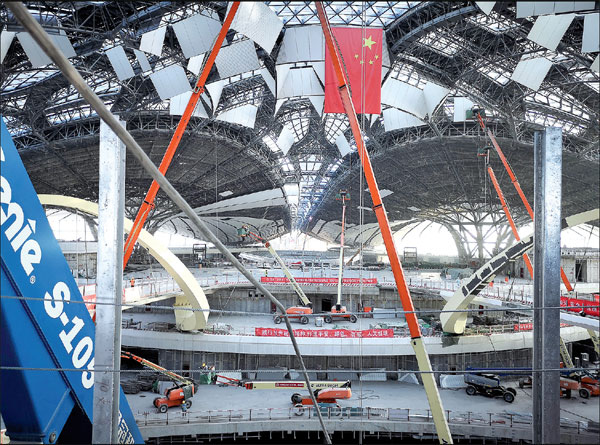
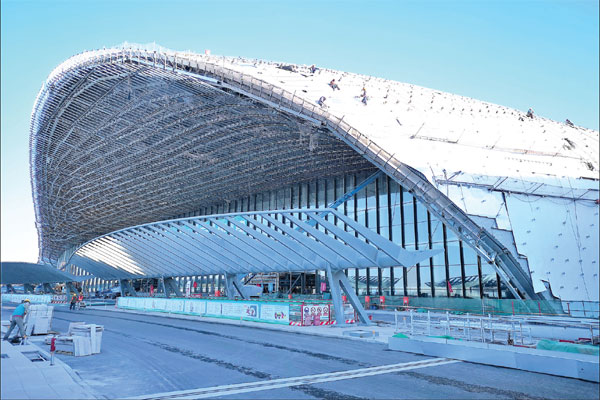
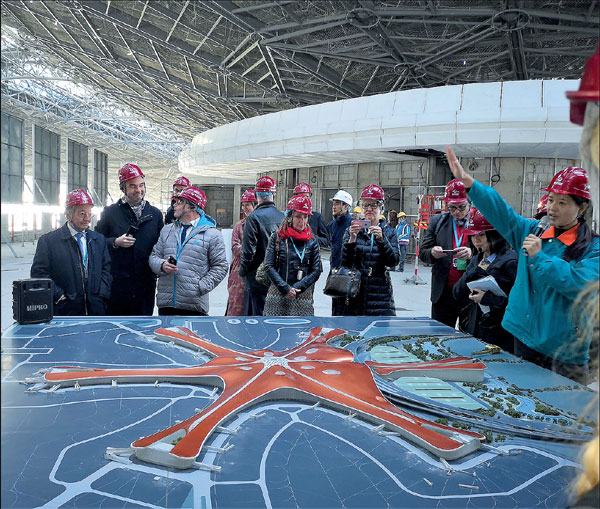
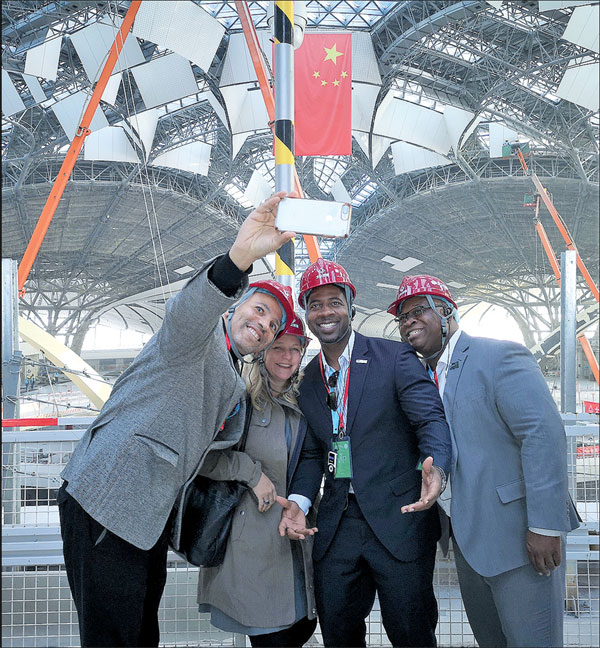
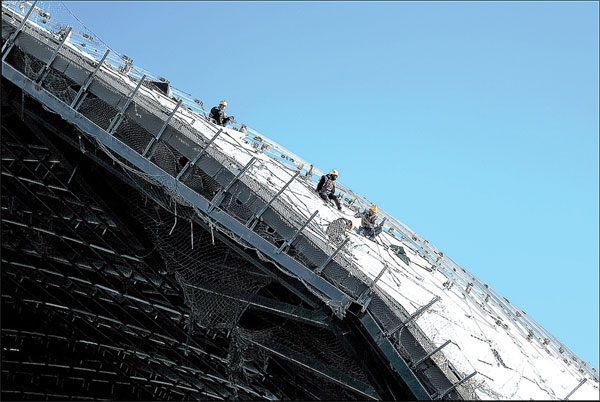
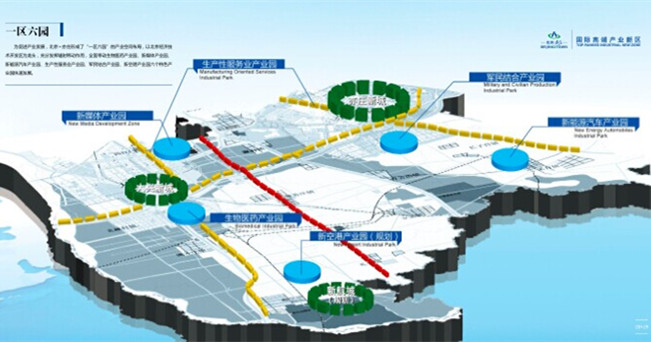 The Area with Six Parks
The Area with Six Parks Global Top 500
Global Top 500